
The Hillside-Loveland Cemetery is the largest cemetery in Norwich with over 2,000 sites. This land was previously owned by the Loveland family, hence the name, and the cemetery was first used in 1827. The left side of the cemetery was used as a ski area in the 1940s and 1950s but now is filled with newer graves.
As you walk around, you’ll see that almost all of these graves are made of granite. Earlier New England settlers used fieldstone or slate but because this graveyard dates from the early 19th century, the primary stone being used is granite.
Cemetery tour created by Lauren Pidgeon
Richard Cossingham: 1835-1906

Richard Cossingham was born into slavery in Virginia on December 15, 1835. After he was freed as a young boy he became a cook on a steamship and worked all through the Civil War, cooking for soldiers. After his wife, Julia, died he moved to Norwich with his two sons in 1883 to work for Dartmouth professor Elihu Thayer Quimby as a chef. His two sons began a farm on Cossingham Road which eventually became one of the most successful dairy farms in Norwich. Richard eventually became a chef for the Newton Inn (the Norwich Inn) and worked there until his death in 1906.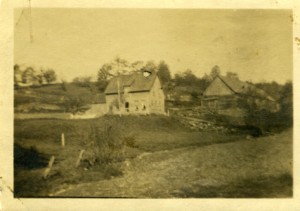
The Pauper’s Area

The Pauper’s area contains approximately 41 occupants and about 30 stones. There are only 25 names that can be identified and except for one small child, all of the occupants were over 27 years old. Many of the poor members of Norwich worked on the Town Farm which was located near Goodrich Four Corners. The Town Farm provided lodging and work for paupers. The town funds also helped out people in need and there are records of these funds paying for cemetery stones. Some of the people in the Hillside Pauper’s area may have worked at the town farm during their time in Norwich.
The Town Farm was purchased in the 1840s. In 1844 there were 24 paupers at the Farm. That number soon declined, there seldom being as many as 8 in any one year for the rest of its history. The Overseers of the Poor reports describe many of the paupers as old and infirm, past the ability to labor. In 1923 the Town Farm was sold.
Albert Messenger: 1832-1889
Albert Messenger was one of the many soldiers from Norwich who fought for the Union in the Civil War. Albert and his younger brothers George, Charles, and Frank all wrote an assortment of letters to their family back in Norwich during their time as soldiers in the war. Albert, along with other men from Norwich, was assigned to the Vermont Sixth Regiment, Company B. In a letter that he writes to his wife, Albert writes that he visited the hospital where he found a fellow Norwich resident whose leg was injured. He explains the interaction and writes that the man is “pretty cheerful… and pretty glad to see me”. Community in Norwich extends much further than just the boundaries of the town as Albert makes clear in his letter.
One day that he lay on the ground, it rained hard, you will think that he must be pretty tough to live through it. he was pretty cheerful yesterday and pretty glad to see me, I can tell you. He thinks that he shall get along now if nothing new takes hold.

Ford Sayre: 1909-1944
Ford Sayre was introduced to Norwich when he moved to Hanover as an undergraduate at Dartmouth. He developed a strong love for skiing and decided to stay in Hanover and work at the Hanover Inn. It was during these years that Ford and his wife Peggy decided to create a skiing school for local kids who couldn’t afford skiing equipment. When World War II began, Ford enlisted in the Army Air Corps and was sadly killed in a crash during a War Bond Drive exhibition. His wife continued the skiing school and founded the Ford Sayre Memorial Ski Council. In the 1940s and 1950s, The Ford Sayre Ski Club used what is now the left side of Hillside Cemetery as a community ski hill.
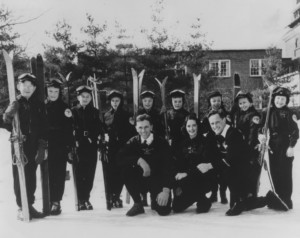
Ford Sayre Ski Team, 1948
Daniel Stewart Fraser: 1912 - 2009

Dan Fraser and Whit Hicks.
At the age of 20, Daniel Fraser began to work at Merrill’s General store where he and Whit Hicks ran a delivery service. The two young men would spend the morning traveling around town taking orders from local families and then in the afternoon they would deliver the groceries. In 1955, Dan and Whit (the names everyone knew them by) decided to buy the store from A.H. Merrill who had begun the business in 1891 and was now retiring. At first, Dan and Whit operated the store in a way where customers read their shopping lists to the person behind the counter and the employee would then rush around the store fetching the items. According to Whit Hicks, this soon became tiring because people often changed their minds at the last minute and wanted to add more to their purchase. In 1972, Whit decided to retire and sold the store completely to Dan Fraser. Dan and Whits is still in the Fraser family and is an important part of the Norwich community.
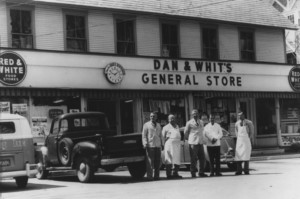
Marion Cross: 1907-1996

Marion Cross, 1939.
Marion Cross came to Norwich in 1932 and began teaching seventh and eighth grade at the brick village school which is now part of the elementary school. In 1951, the last one-room schoolhouse closed so the village school had to expand. Tracy Hall became an extension of the Norwich school with Marion Cross as Principal-Teacher. Finally more classrooms were added to the Norwich school and after 44 years with Marion Cross as Principal, the people of Norwich voted to name the school after her. She was known to be open minded and encouraged her students and teachers to be curious and to respond to change. It seems more than fitting that the center of the Norwich community and the school that teaches the next generation of Norwich should be named after such a passionate and influential person.

Marion Cross in her classroom. Vermont Life Magazine, 1969.
Basil Milovsoroff: 1917-1992
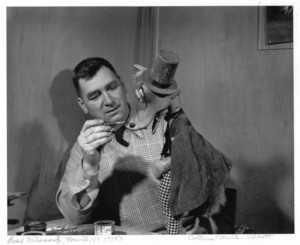
Basil Milovsoroff was born in Siberia in 1906 and studied at Oberlin college where he met his wife and developed an interest in marionettes and puppets. He toured for 20 years with his wife and puppets, performing at schools, camps, and theaters. He moved to Norwich in the 1940s and became a Dartmouth professor of Russian in the late 1950s. He was one of several professors who left Europe during the War, settling in Norwich. In 1983, he received the President’s Award of the Puppeteers of America.
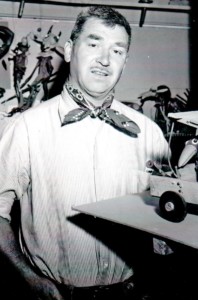
Lillian Steel Loveland
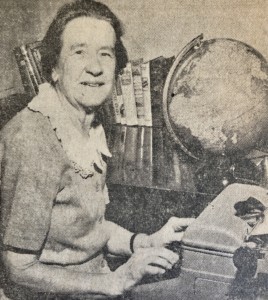 Lillian Loveland was well known for her travels around the world in Upper Valley newspapers. She wrote a book about one of her most famous adventures called Around the World on a Freighter at 76 which won first prize in the Association of American Travel Agents’ Contest. Her trip took her across the Pacific to Australia, New Zealand, Fiji, and Hawaii. On another trip, Mrs. Loveland rode a cargo liner called the “President Jefferson” which visited Korea, India, Indonesia, Pakistan, Malaysia, Italy, and Spain. Mrs. Loveland was also known for riding a horse 6 miles on her 80th birthday, holding tea visits at her house in Norwich, and for having her own beach built on the Connecticut River. When in Norwich she lived on Loveland farm which is now Riverview Farm. Lillian and her husband George retired to Norwich and lived in the house from 1930 to 1955.
Lillian Loveland was well known for her travels around the world in Upper Valley newspapers. She wrote a book about one of her most famous adventures called Around the World on a Freighter at 76 which won first prize in the Association of American Travel Agents’ Contest. Her trip took her across the Pacific to Australia, New Zealand, Fiji, and Hawaii. On another trip, Mrs. Loveland rode a cargo liner called the “President Jefferson” which visited Korea, India, Indonesia, Pakistan, Malaysia, Italy, and Spain. Mrs. Loveland was also known for riding a horse 6 miles on her 80th birthday, holding tea visits at her house in Norwich, and for having her own beach built on the Connecticut River. When in Norwich she lived on Loveland farm which is now Riverview Farm. Lillian and her husband George retired to Norwich and lived in the house from 1930 to 1955.
Additional Links
Norwich Troop 253 Scouts recorded veterans for Hillside Cemetery, VT.
